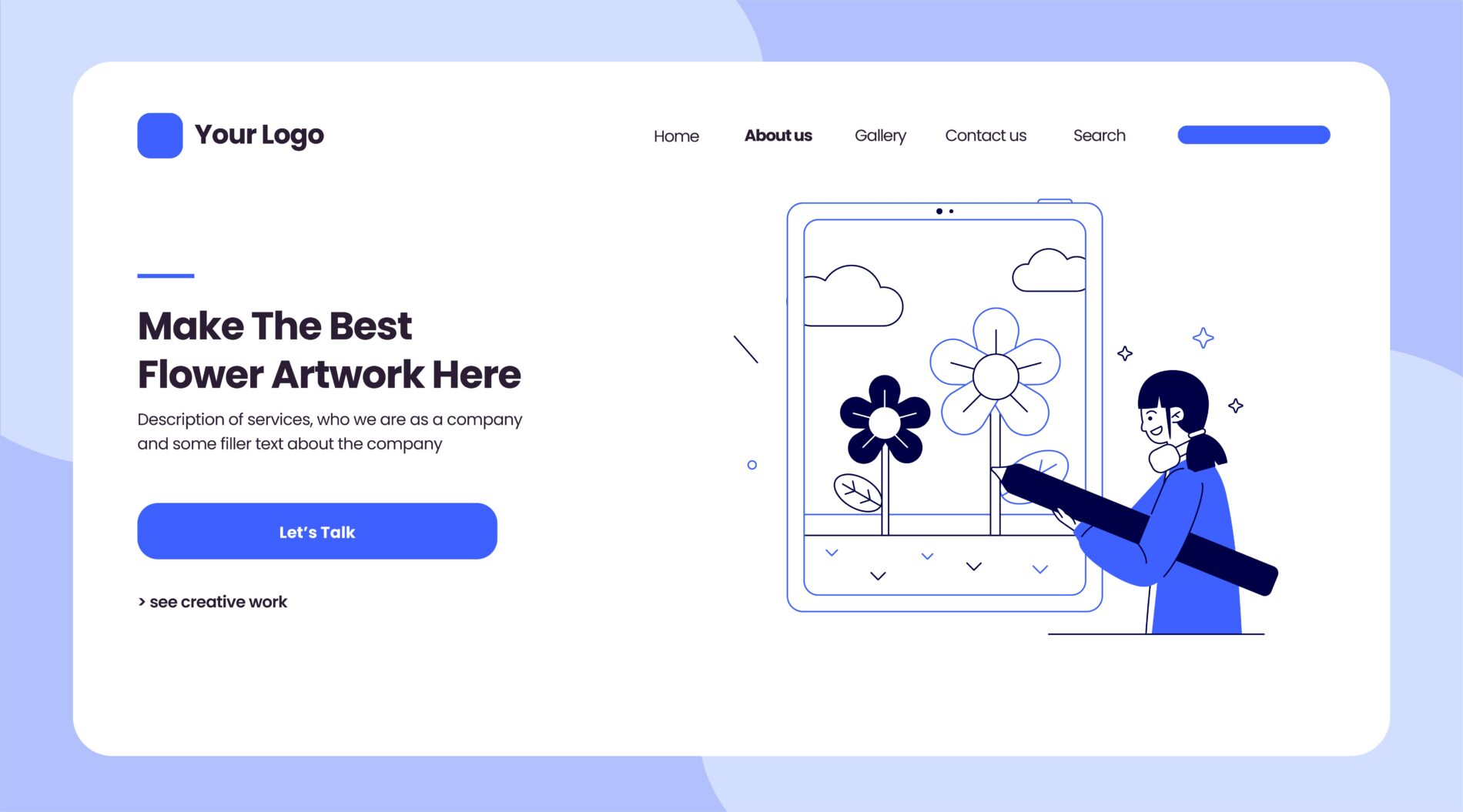So, why is minimalism so effective in the realm of web design? Let’s explore how this design philosophy can enhance user engagement, improve site performance, and drive business growth.
What Does Minimalism Mean in Web Design?
Minimalist web design is all about stripping away the non-essential elements to focus solely on what truly matters. The key components of minimalist design include a simplified color scheme, clean fonts, generous white space, and uncluttered layouts. The objective is to create an intuitive experience that allows users to easily navigate, understand, and interact with the website’s content.
1. Enhanced User Experience (UX)
A website’s success hinges on how well it serves its users. A cluttered, complex layout can confuse or frustrate visitors, causing them to leave before exploring. Minimalist designs, on the other hand, emphasize clear navigation and focus on what users need most. By eliminating unnecessary content, users can quickly and effortlessly find the information they’re looking for.
For example, minimalist sites often have a streamlined structure with clear calls to action, guiding users step by step without overwhelming them. This user-friendly design approach encourages visitors to stay longer and engage more deeply with the content.
2. Faster Load Times
Speed is crucial for any website. In a world where instant access is expected, websites that load quickly keep users engaged. Minimalist web design typically results in lighter pages with fewer elements to load, speeding up load times. Since Google and other search engines prioritize faster websites in their ranking algorithms, minimalism not only enhances UX but can also improve your SEO and visibility.
By cutting out unnecessary elements, you enhance both the user experience and your website’s performance, which can ultimately lead to higher conversion rates and better search engine rankings.
3. Superior Mobile Responsiveness
As mobile internet usage continues to rise, designing with mobile users in mind is non-negotiable. Minimalism pairs perfectly with mobile-first design because of its clean and simple structure. Fewer design elements mean less scrolling and zooming, making it easier for users to navigate on smaller screens. Furthermore, minimalist websites are more adaptable to different screen sizes, providing a consistent and fluid experience across all devices.
Adopting a minimalist approach ensures that your website remains mobile-friendly, which is essential for maximizing user engagement and retention in today’s mobile-driven world.
4. Clear Brand Identity
Minimalism allows your brand to shine by cutting through the noise. With fewer distractions, your website’s design becomes a reflection of your brand’s core message, values, and vision. This can be achieved through intentional typography, strategic color choices, and carefully selected imagery. A minimalist approach also helps build a modern and professional look, which can enhance trust and credibility with your audience.
In a crowded digital marketplace, a clear, clean design can make your brand more memorable and distinguish you from the competition.
5. Easier Maintenance and Growth
A minimalist website design is often simpler to maintain and expand. Because there are fewer elements to manage, updates and content additions can be done more efficiently. As your business evolves, minimalist design allows you to scale your website without it becoming overcrowded or losing focus. This flexibility ensures your site remains relevant as it grows.
6. Better SEO Performance
Search engines prefer simplicity, and minimalist designs often contribute to better SEO results. With streamlined HTML, faster load times, and well-organized content, search engines can more easily crawl and index your site. Additionally, minimalist designs tend to focus on high-quality content and optimized images, which also boost your search rankings.
By prioritizing content over unnecessary elements, minimalist designs improve both the user experience and search engine optimization, resulting in better visibility online.
Notable Examples of Minimalist Web Design
Leading companies like Apple, Google, and Airbnb exemplify how minimalism can elevate a brand’s online presence. Their websites feature sleek, clean layouts, user-friendly navigation, and bold visuals that put the spotlight on their products and services. These brands have mastered the art of minimalist design, creating websites that are both visually appealing and highly functional.
How to Achieve Minimalism in Your Web Design
- Start with a Clear Goal: Define the main purpose of your website. Whether it’s generating leads, selling products, or providing information, your design should focus on achieving that goal.
- Embrace White Space: White space is crucial in minimalist design. It helps create balance and draws attention to the most important elements.
- Simplify Navigation: Keep the navigation menu straightforward with clear categories to enhance user flow.
- Prioritize Typography: Use legible, clean fonts and avoid excessive font styles or sizes.
- Limit Visual Elements: Use a simple color palette and only include images that are vital to the design or message.
- Ensure Mobile Optimization: Your minimalist design should be responsive, adjusting seamlessly to different screen sizes for a consistent user experience.
Final Thoughts: Why Minimalism Matters
Minimalist web design is not just a passing trend; it’s a timeless strategy focused on clarity, functionality, and speed. By stripping away unnecessary elements, you create a cleaner, more efficient website that enhances the user experience and improves performance. In a digital environment where users have limited attention spans, the “less is more” approach can make all the difference, helping you create a memorable and effective online presence.

